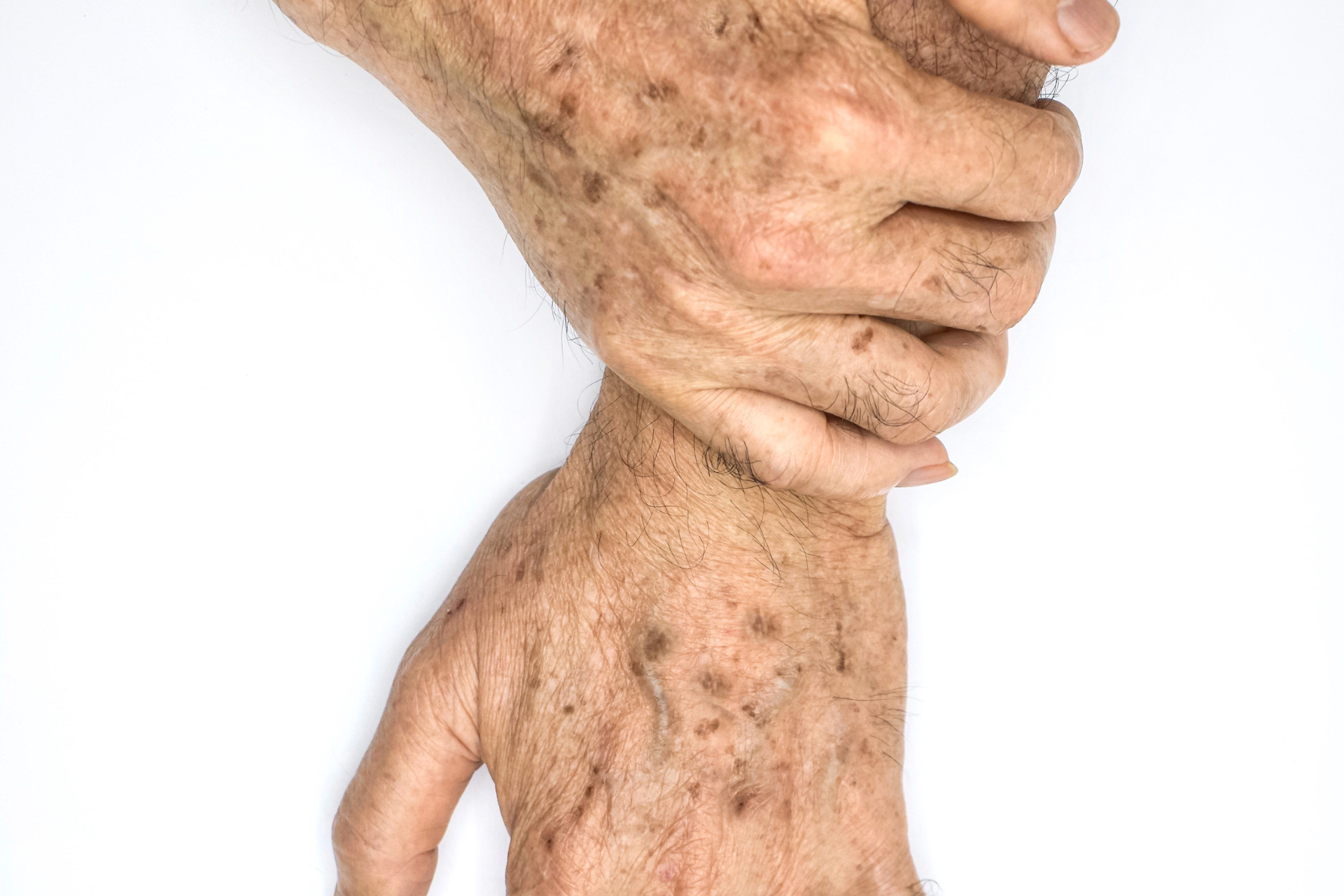How to Identify and Treat Age Spots

As we age, our skin undergoes various changes, and one common occurrence that many people encounter are age spots. Also known as liver spots or sun spots, these brown, tan, or black skin discolorations can develop on areas of the body that are frequently exposed to the sun, such as the face, hands, shoulders, and arms. While age spots are generally harmless, they are a telltale sign of sun damage and aging. In this blog post, we will discuss how to identify age spots and explore effective treatment options for managing them.
Identifying Age Spots:
Age spots are typically flat, oval-shaped, and vary in size. They are most commonly found on areas of the skin that have been exposed to the sun over the years, as the ultraviolet (UV) rays can trigger the overproduction of melanin, the pigment responsible for skin color. Age spots can range in color from light brown to dark brown, and they may appear individually or in clusters.
It's essential to differentiate age spots from other types of skin discolorations, such as freckles or moles, which may require different treatment approaches. If you notice any changes in the color, size, or shape of a skin lesion, it is important to consult a healthcare professional for a proper evaluation.
Treating Age Spots:
While age spots are harmless, many individuals seek treatment for cosmetic reasons or to prevent further sun damage. At Fall Creek Skin and Health Clinic, we offer various treatment options to help address age spots and improve the overall appearance of the skin.
1. Topical Treatments
Over-the-counter creams and lotions containing ingredients like hydroquinone, retinoids, or kojic acid can help lighten age spots over time. Prescription-strength formulations may be recommended for more stubborn or larger spots.
2. Laser Therapy
Laser treatments, such as intense pulsed light (IPL) therapy or fractional laser resurfacing, can effectively target and break down pigment in age spots. This non-invasive procedure stimulates collagen production, resulting in smoother, more even-toned skin.
3. Chemical Peels
Chemical peels involve applying a solution to the skin that exfoliates the top layer, revealing fresh, evenly pigmented skin underneath. Mild to moderate peels can help reduce the appearance of age spots and improve skin texture.
4. Cryotherapy
Liquid nitrogen is used to freeze and destroy the excess pigment in age spots, causing them to peel off and gradually fade. This minimally invasive treatment is quick and requires minimal downtime.
5. Home Remedies
Some natural ingredients, like lemon juice, apple cider vinegar, or aloe vera, are believed to have skin-brightening properties and may help lighten age spots when applied regularly. However, it's essential to consult a dermatologist before trying any home remedies to ensure they are safe for your skin type.
Preventing Age Spots:
While age spots are a natural part of the aging process, there are steps you can take to prevent them from worsening or appearing in the first place. Practicing sun protection habits, such as wearing sunscreen daily, seeking shade during peak sun hours, and wearing protective clothing, can help shield your skin from UV damage and reduce the risk of developing age spots.
In conclusion, age spots may be a common skin concern as we age, but there are effective treatments available to manage and improve their appearance. By understanding how to identify age spots and exploring appropriate treatment options, you can take proactive steps to maintain healthy, radiant skin. Remember to consult a healthcare professional at Fall Creek Skin and Health Clinic for personalized advice and treatment recommendations tailored to your skin's needs.



Need Our Services?
Book a free consultation

Our promise is to offer high-quality medical attention at a fair price in a clean, friendly, and professional environment.
QUICK LINKS
BUSINESS HOURS
- Mon - Thu
- -
- Friday
- -
- Saturday
- Appointment Only
- Sunday
- Closed
All Rights Reserved | Fall Creek Skin and Health Clinic |
